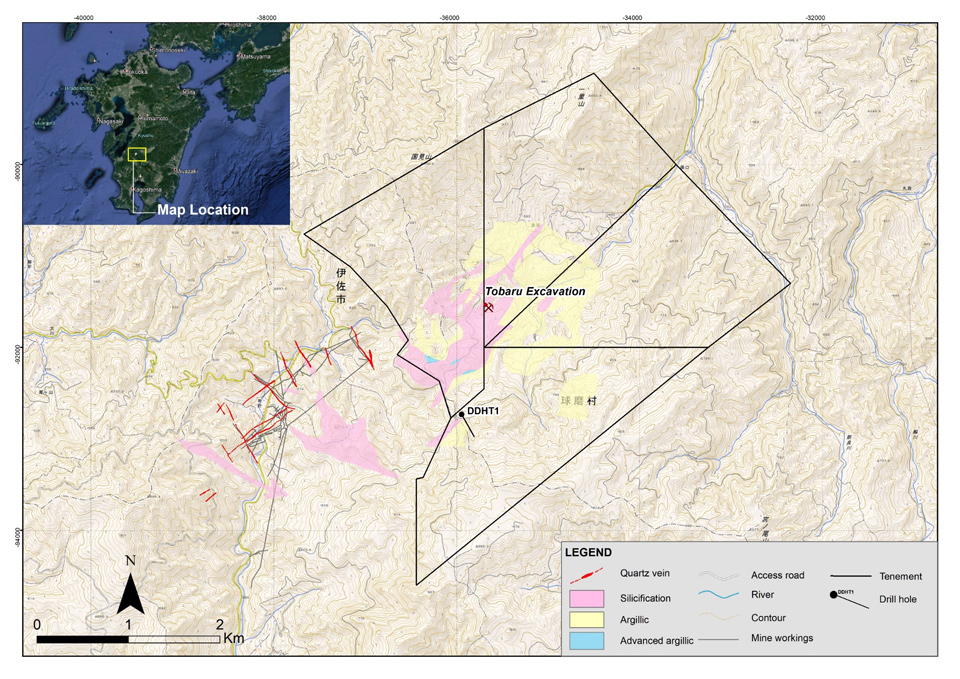Geology and Mineralisation
Geology of the Tobaru Property is comprised of the Hokusatsu Andesite Formation and overlying Yamano Rhyolite (2Hamilton, 1993). The early Pleistocene-aged Hokusatsu andesite consists of subvolcanic intrusives, dykes and sills with a possible upper lava flow member. All known HSE and LSE vein mineralization is hosted by this unit.
The younger Yamano Rhyolite is moderately to intensely altered in the project area with no fresh samples sighted (Hamilton, 1993). Relict textural features suggest a felsic composition that is porphyritic with feldspar phenocrysts in a fine-grained glassy matrix.
The Au mine deposits found within and in proximity to the Tobaru property are classified as rift low-sulphidation epithermal.
The Fuke mine, adjacent to the Property, was developed over more than ten known Au bearing quartz veins that were categorized into the following two types (3Muto, 1952):
- Honpi (main) type veins that typically strike N60~80° E, dip 70~80° N. Chlorite is notably found as one of the gangue minerals in the upper part of bonanza zones in addition to quartz and calcite.
- No. 1 type veins that typically strike N30~40° W, dip 70~80° W and comprise of quartz and calcite.
Veins were described as hosting pyrite, chalcopyrite, sphalerite, galena, hematite, electrum and argentite (4Watanabe, 2005) and are primarily hosted by the Hokusatsu andesite.
High grades (15.7-26.9 g/t Au) are typically found on flexures where veins change orientation to an E-W trend.
Age dating of adularia samples from LSE Au-bearing vein (4Watanabe, 2005) and illite from advanced argillic HSE alteration (illite-pyrophyllite-topaz-tourmaline assemblage) show that the advanced argillic alteration event predates the LSE mineralization by almost 1 million years.
 Tobaru property alteration map, historical mined veins and drillhole (DDHT1) location map (after Hamilton, 1993)
Tobaru property alteration map, historical mined veins and drillhole (DDHT1) location map (after Hamilton, 1993)
A WNW-SSE structural control on the Tobaru alteration zone is inferred from its elongated orientation and steeply-dipping bounding fractures.

